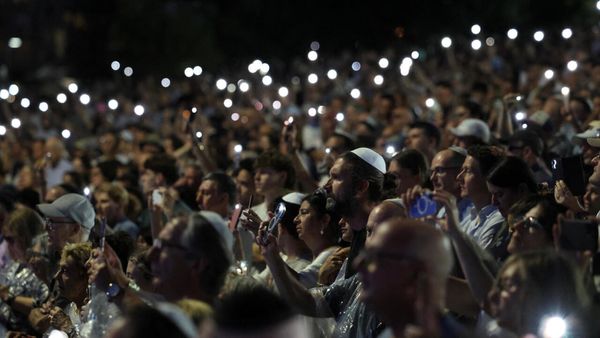
Russian authorities have systematically involved children in the design and testing of drones for the country’s war in Ukraine through nationwide competitions that begin with innocent-seeming video games and end up with the most talented students headhunted by defence companies, an investigation has found.
The revelations, part of an investigation by the exiled Russian news outlet the Insider, are the latest to show just how much Russia’s leaders are dragging the country’s youth into the war effort in Ukraine, with “patriotic” and militarised education often spilling over into outright participation.
“The kids are actively involved in modelling components of systems for various drones,” one of the teenagers involved told a journalist. “I know of several people at least who were modelling UAV [unmanned aerial vehicle] components for major enterprises.”
Vladimir Putin has called for Russia to boost its production of drones, which have increasingly become a key part of the war for Russia and Ukraine. But the drone battle on the frontlines is constantly changing as both sides discover new technologies to enable drones to fly further and evade electronic jamming systems, and Russia is seeking the smartest tech prodigies among its youth to help with the effort.
The path starts with a video game called Berloga, launched in 2022, in which “intelligent bears” have to defend themselves against swarms of bees, sometimes using drones to repel them, the investigation found. Succeeding in the game, which is played by hundreds of thousands of young Russians, can lead to extra credits in exams at the end of high school.
The most successful players move into more advanced competitions, such as one called Big Challenges, which looks for promising school pupils to be headhunted by Russian companies, many of which are under international sanctions for their roles in the Russian defence industry.
The Insider spoke with three teenage finalists from the competition working on drone technology, who explained how it worked and detailed how they were fully aware of the military application of certain projects but were encouraged to hide it.
“We were forbidden to say that it was needed for the war, and we invented civilian applications. It’s a children’s program … A project must always have a dual purpose, especially when you’re a school student. It’s an unwritten rule I’ve observed at every competition,” said one.
While small FPV [first-person view] drones are the deadliest weapon on the frontlines, Russia and Ukraine have also used long-range drones to hit targets far in the rear. Russia sends nightly barrages of kamikaze drones into Ukraine, regularly terrorising the capital, Kyiv, and other big cities.
Children are also involved in the production of these larger drones. Over the weekend, a documentary broadcast by the Russian army’s television station showed teenagers helping to construct kamikaze drones at a factory described as the world’s biggest maker of strike drones.
Employing children in military facilities, which could be legitimately targeted in wartime, violates numerous international conventions.
The footage shown on Sunday showed hundreds of completed Geran-2 kamikaze drones in neat rows. The facility has been put on an EU sanctions list and has come under attack itself from Ukrainian long-range drones.
The Geran-2, which has a range of nearly 1,000 miles, is an adapted version of an Iranian kamikaze drone, with production now localised in Russia at a factory in Alabuga in Tatarstan. Moscow claims it uses these drones only to target military and energy infrastructure but there are regular cases of them hitting civilian and residential targets.
Russia’s state-run Zvezda TV channel said the Alabuga factory had invited 14- and 15-year-old pupils to study drone manufacturing at an adjacent college and subsequently work at the factory. Young workers were shown in the footage with their faces blurred, sitting at computers or assembling drones.
Children contacted by the Insider also spoke of working inside military facilities: one explained how, aged 13, he had trained soldiers in drone operations inside a state facility in 2022.
The correspondents posed as reporters from state-controlled media outlets. Independent journalism has essentially been outlawed in Russia since the state of the full-scale invasion of Ukraine in 2022, with most of those still working forced into exile.
By posing as state-controlled journalists still in the country, the reporters hoped their interviewees would feel more comfortable sharing sensitive information with them.
The best public interest journalism relies on first-hand accounts from people in the know.
If you have something to share on this subject you can contact us confidentially using the following methods.
Secure Messaging in the Guardian app
The Guardian app has a tool to send tips about stories. Messages are end to end encrypted and concealed within the routine activity that every Guardian mobile app performs. This prevents an observer from knowing that you are communicating with us at all, let alone what is being said.
If you don't already have the Guardian app, download it (iOS/Android) and go to the menu. Select ‘Secure Messaging’.
SecureDrop, instant messengers, email, telephone and post
See our guide at theguardian.com/tips for alternative methods and the pros and cons of each.







